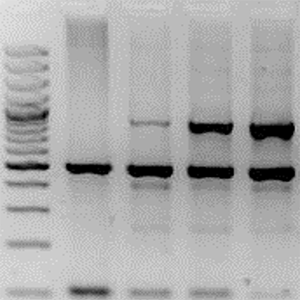Stability analyses of sunflower (Helianthus annuus L.) hybrids for oleic acid and yield traits under multi location trials in Pakistan

Accepted: 9 November 2022
Appendix: 184
HTML: 110
All claims expressed in this article are solely those of the authors and do not necessarily represent those of their affiliated organizations, or those of the publisher, the editors and the reviewers. Any product that may be evaluated in this article or claim that may be made by its manufacturer is not guaranteed or endorsed by the publisher.
The development of a hybrid with high oleic acid is an important breeding goal for sunflower. High oleic acid sunflower has better cooking quality due to low oxidation and rancidity. Hence, inbred lines differing for oleic acid content were selected, alongside the development of hybrids where one or both parents exhibited high oleic acid content in edible oil, and then evaluated at various sites (i.e. with comparatively low temperature during sunflower reproductive phase at Sargodha and Faisalabad; while high temperature and low humidity at Bhawalpur and Multan) in Pakistan during spring season. Moreover, autumn season was relatively cool and high humid for sites (Faisalabad and Sargodha, Pakistan). DNA profiling of hybrids differing for oleic acid content using N1-3F/N2-1R confirmed the presence of a high oleic acid allele in the hybrids. Oleic acid content and seed yield components were increased at high temperature and low humidity to a greater extent in spring than in autumn season. Among the hybrids, one (H5) had stable high oleic acid content during the spring season with higher seed yield and kernel to seed percentage than the check cultivars (Hysun-33 and FH-331). Analysis of the combining ability of two locations revealed a relationship between mean oleic acid contents and combining ability, thereby suggesting the effectiveness of selection in developing high oleic acid inbred lines. Newly developed inbred C.112.P was a positive combiner for oleic acid at all sites except Sargodha, while restorer populations such as RH.344, RH.345 and RH.347 were positive male combiners.
Supporting Agencies
This study was partly funded by ALP-PARC to project entitled: Development of sunflower hybrids modified for high oleic acid in edible oil (C-163).How to Cite

This work is licensed under a Creative Commons Attribution-NonCommercial 4.0 International License.
PAGEPress has chosen to apply the Creative Commons Attribution NonCommercial 4.0 International License (CC BY-NC 4.0) to all manuscripts to be published.

 https://doi.org/10.4081/ija.2023.2079
https://doi.org/10.4081/ija.2023.2079



